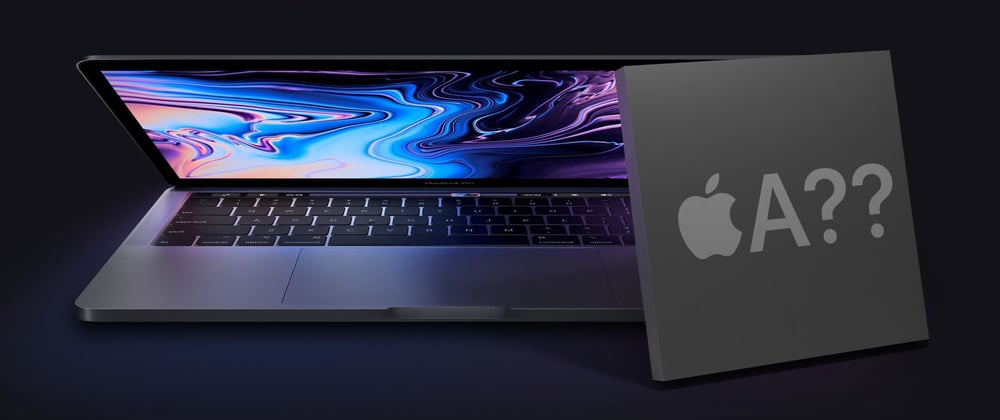Hello 👋 Everyone
This is My First post on Dev.to
I hope you Love it
Today .. I Will talk about ARM Processors
and the future of it
Within the opening of the WWDC conference a while ago, Apple announced a move that had been rumored for years ago, but remained shocking even after reports that continued to insist that it was coming soon: the upcoming Mac computers would gradually move to use processors with the ARM architecture and designed by Apple itself. This decision may be the most important thing that the American company did in recent years, and it may be the door to unprecedented control in the following years.
To understand the matter well, it is necessary to explain the difference between what Apple is currently doing and what it plans to do with this gradual transition, which will take nearly two years to complete completely, and after understanding the basics, the pros and cons of this transition can be mentioned, and it is possible to address the aspect that looks frightening perhaps in the event. It worked as Apple wanted.
Let's start from the beginning: What is the change that Apple is doing now in the first place?
What is the difference between Intel processors and ARM processors?
Looking at any computer Apple has made in recent years, there are undoubtedly unifying factors, as computer processors always come from Intel, just as graphics processors come from AMD. In fact, Apple's partnership with Intel extends for a long time, starting in 2006, but it is in the final stages today and is expected to end with the year 2022.
Current Intel processors, as well as their AMD competitors, use a complex instruction set called x86, and this set of instructions is one of complex instruction sets, and any processor that uses them is called CISC (short for Complex Instruction Set Computer). On the other hand, ARM and several other companies have developed short instruction sets and the processors used by RISC (short for Reduced Instruction Set Computer).
Today, CISC processors are used in computers in general, as they have a large set of instructions that allow programs to end more complex processes during one cycle of the processor, while RISC processors are used in tablets, smartphones, and so on, although they need more circuits to implement complex instructions, they consume much less energy and produce Much less heat.
The catch is that Apple wants to move its computers from using Intel processors with complex instruction sets, to processors with a simpler instruction set architecture. This task is not usually simple, and although Apple has pledged that the transition will be very simple and application developers can implement it in just two days, the previous times do not reflect this reality.
The difficulties that may stand in front of the matter can be noticed from Apple moving in the opposite direction in 2006 when it moved from PowerPC processors that use a simplified instruction set to Intel with a complex instruction set, or from the difficulties Microsoft still faces in dealing with ARM processors even though it has been trying to achieve this since Several years in fact.
However, as Apple is officially heading towards ARM, there are many things that could happen. Of course, these expectations are not sure, but they may or may not come true, but it is useful to understand them in order to know the direction in which Apple and perhaps even the tech industries as a whole may be heading.
Positive results for the transition of Mac computers to ARM processors
Less energy and heat output
In recent years, there have been several fundamental problems that have plagued Apple about its laptops, in addition to the disastrous Butterfly Switch keyboard, there were many thermal problems, as many MacBook Pro computers suffered from throttling their performance because the company's thermal solutions were not sufficient to cool the Intel processors within them.
This point may be one of the first things that will change with the use of processors built according to the ARM architecture, as this architecture allows processors that produce a very small amount of heat so that it will be possible to make many completely closed laptops that do not need a fan in the first place.
In recent years, Apple has begun to lose the reputation of its laptops for long battery life, as many companies have managed to catch up with it and even surpass it. But with processors with the ARM architecture, things can change dramatically in reality, and perhaps one example is the Samsung Galaxy Book S laptop that uses the Snapdragon 8cx processor and has a battery life that lasts up to 26 hours!
More performance as a result of controlling all parts of the production
There is a truth known to all: the more control a company has over the design and manufacture of its products, the more opportunities it has to improve performance. This is what Apple has previously done with iPhones and iPads, for example, as the company's work to develop processors on its own has allowed it to reach high performance levels that have kept it at the forefront for many years now.
Of course it is possible that things go wrong and the company fails to achieve a truly competitive level of performance, but if things go as last time and as Apple wants, it is possible for the company to add more performance and compatibility to its computers as it relies on its software originally and now it is adding reliance on hardware parts He also made it.
Potential access to comprehensive software
The good, the bad and the ugly are the next Macs to migrate to ARM-architecture
Perhaps one of the most interesting things about Apple's review of the new processor architecture is to run apps and games designed for iOS directly on the Mac Mini. This matter will be more common with the introduction of the next company's computers, but it is not really important, but the important thing is the meaning behind it.
IOS and iPadOS are known to be largely built as a simplified version of macOS. And with the fact that Apple uses a unified programming language for all of its platforms on the one hand, and will design all its processors according to the same architecture, it is not unlikely that Apple will be able to do what Microsoft previously tried: allowing the development of a single application that works on all the company's platforms together.
Currently, Apple has a major advantage in the field, as it is the only company that controls a real share of computers and smartphones alike, in addition to being dominant in the fields of smart watches and tablets. So if someone gets there, it's Apple, and the company is clearly planning to do so.
The biggest attraction for developers
It is known that the various Apple platforms are very attractive to developers in any case, but in the event of access to comprehensive programs, Apple will be more attractive than ever, especially since it will not have any real competitors that allow something like this.
In case we push the share of Apple aside, we find that the field of computers is dominated by the Windows system, while smartphones and tablets are almost completely occupied by Android. And the fact that cooperation between the two systems, even if it happened, is almost impossible to implement on the same level as Apple, the reality is that Apple platforms will remain the only place where developers can develop one software within a single development environment to work on everything from the smartwatch to the desktop computer.
Challenges and potential negative consequences of switching to ARM processors
Although Apple's decision to move towards ARM-based processors has many potential advantages for the company and users alike, the matter undoubtedly bears the negatives, and these negatives sometimes come for rational reasons, or from guesses based on Apple's previous actions.
Compatibility issues that will appear in the first period at least
Although compatibility problems are known to everyone when upgrading systems to newer versions, usually, the matter here is more effective because the hardware itself has changed, and therefore there is a much greater possibility of incompatibility. For the first time, the software will need to work with a tool that converts instructions designed for x86 processors into its ARM-compliant counterpart.
Although this method of operation will mean that most programs are supposed to work without problems even if they have not been updated for compatibility with ARM processors, it is certain that some programs will suffer from problems, whether in terms of slow performance resulting from the conversion stage, or that some will not work at all using this method.
In the long term, this will not be a problem, of course, with the transition of programs to the new architecture, but for the first users of Mac computers with ARM processors, there will be some problems that need time to solve, and if the required programs come from small developers who have stopped supporting them, for example, the problems It may not be resolved at all.
Potential performance issues
The idea of Apple developing and designing its processors on its own has pros and cons depending on the matter in terms of performance, although there is a possibility that the company will be the best developer of its computer processors because it controls the hardware and software completely, it is possible that the matter is in the opposite direction and the company fails to compete with performance Provided by Intel processors, for example.
The matter here is completely speculative and unpredictable, but the potential for poor performance is just as possible as the potential for outperforming.
Fears of monopoly
It is known that Apple's App Store is available on all its platforms, but unlike its case as the exclusive place for applications on iOS and iPadOS, Mac users are not really obligated to the store, and this matter is very important since most of the major programs for macOS are not available on the store originally .
The problem with the App Store is that it deducts 30% of purchases or subscriptions that go through it, and it also prevents apps from directing users to buy from an independent party. While it's grudgingly acceptable with mobile apps, things are different on computers where most software is paid and developers want to stay independent of the popular store.
The positive thing may be that Apple will face significant resistance from developers if it wants to commit everyone to the store, and although small developers may not be able to stand up to such a change, large companies that have very important software packages such as Adobe and Autodesk will likely be able to halt efforts towards such a change.








Top comments (0)